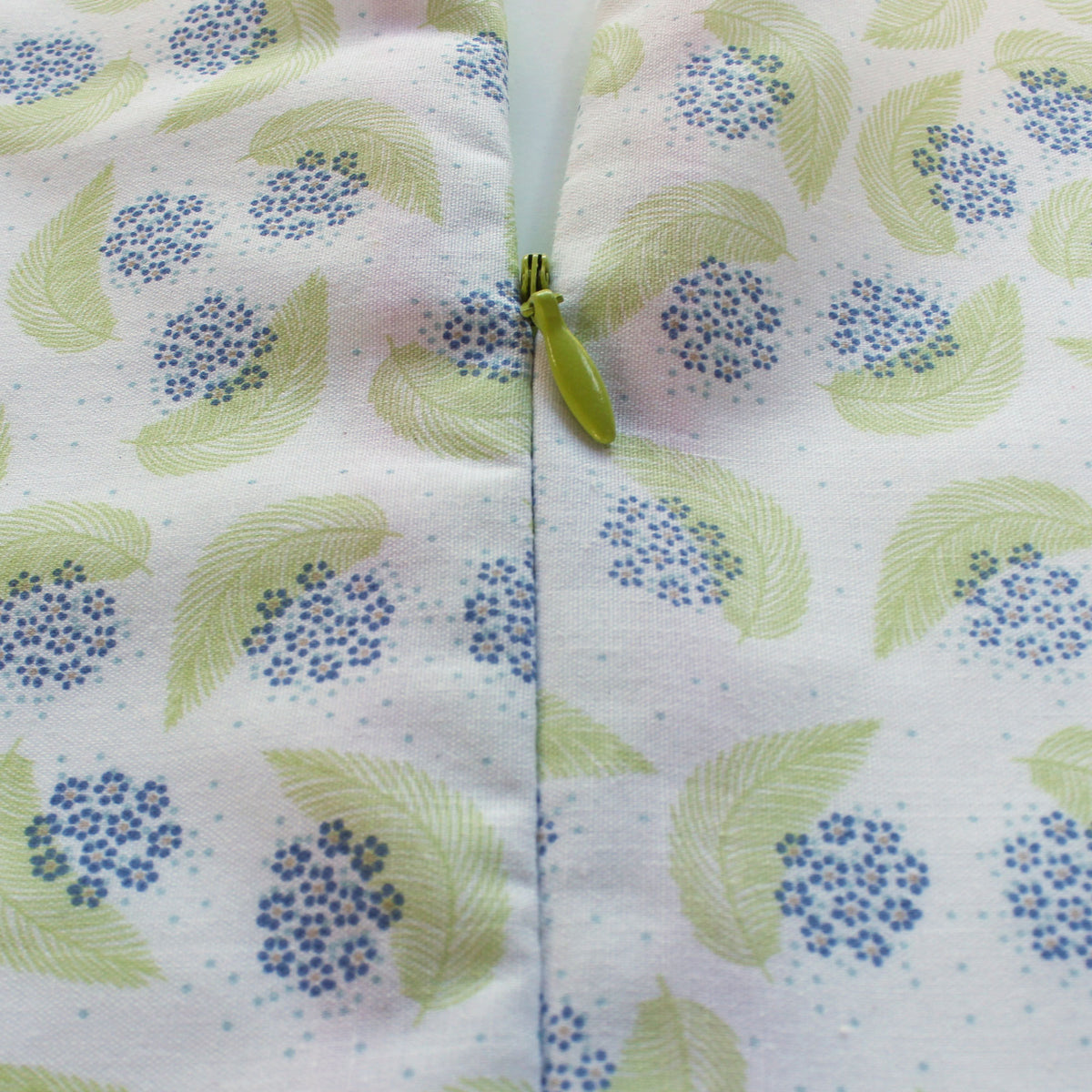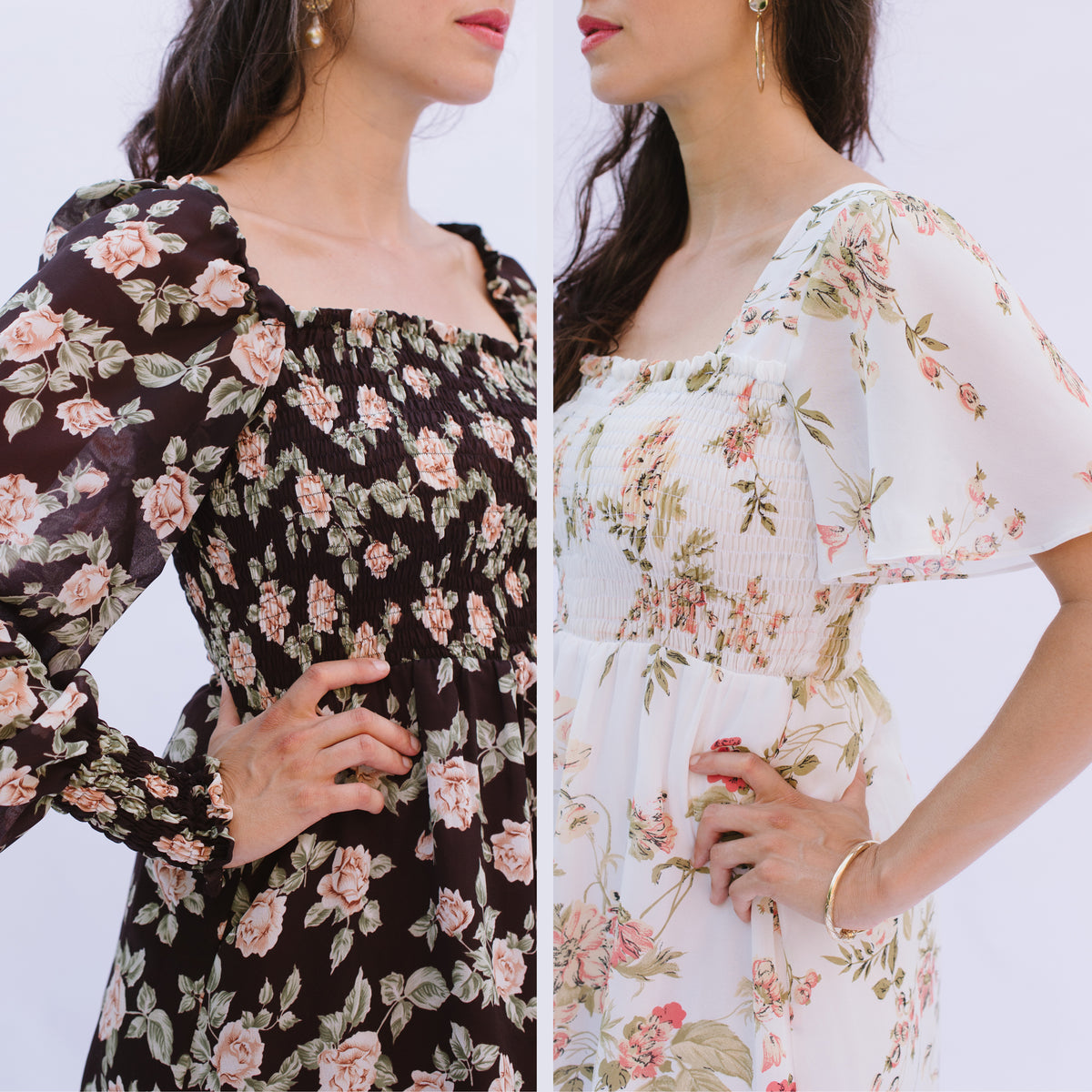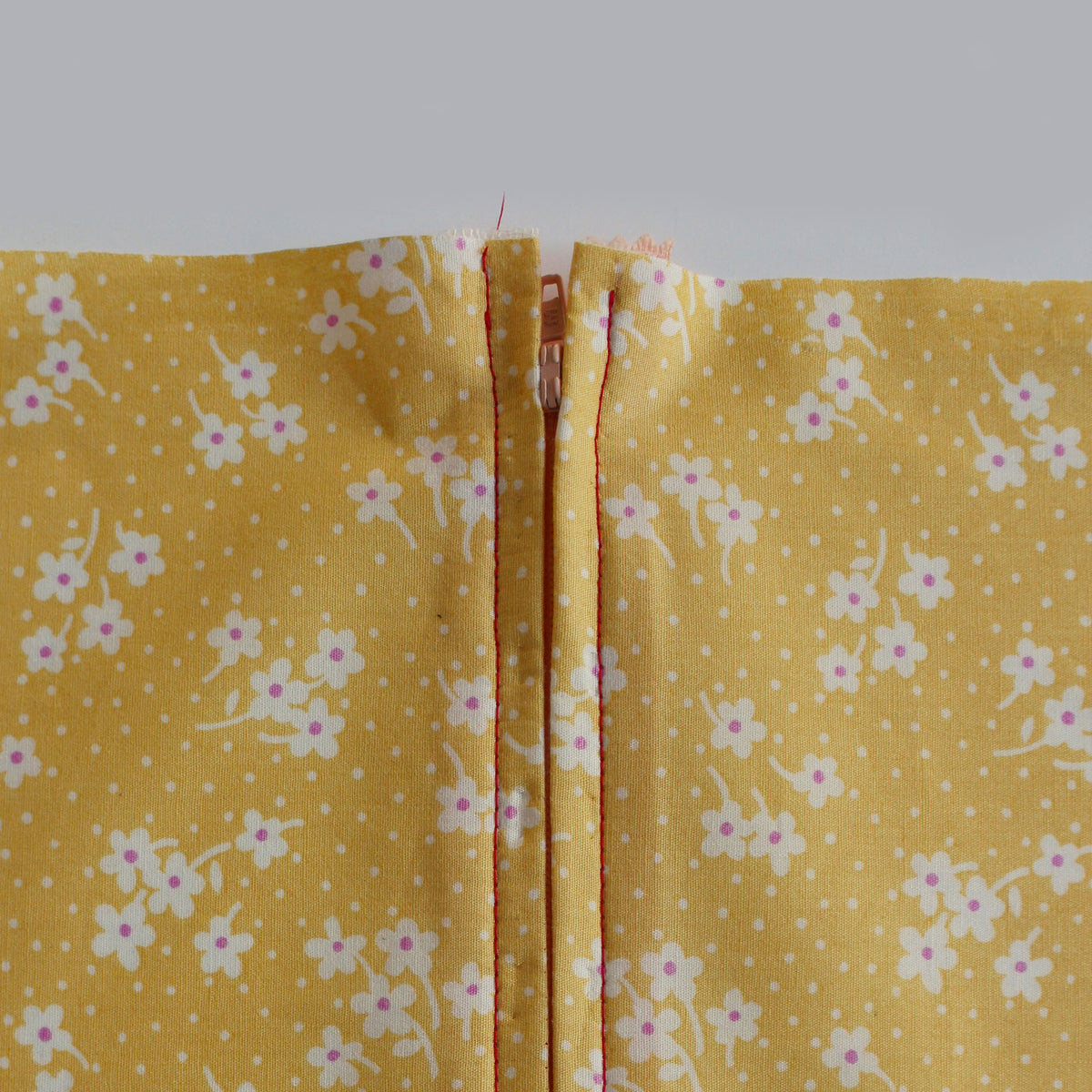
Today is day one of construction in the Jackie sewalong! It's time to put all of your sewing practice from last week's post to work. For today we will be applying interfacing and preparing the back facing for construction. We will be creating our button loops, which involved turning out a tiny tube of fabric right side out. You'll learn tips on how this is done, and how to apply beautiful rouleau button loops to your facing.
For the beginning of our project, I'll be switching around the order of construction compared to the pattern's instruction order. This is just a head's up for those of you who are also referring to your pattern's instructions.
1: Interfacing
The Front Facing (H), Back Facing (D) and Back Upper Center (E) all require interfacing.
When you are preparing a piece for interfacing, lay it wrong side up on the ironing board, making sure that it is laid out neatly and flat.
Place the interfacing glue side down onto the fabric. Align edges and make sure that the interfacing is laying flat.

Use a press cloth to protect your fabric. When applying interfacing, use heat steam and pressure. Press up and down with the iron instead of side to side, as this can shift the interfacing. Hold in place for a few seconds in each spot. Repeat until the interfacing adheres fully.


Interfacing can cause shrinkage in fabric, and I noticed this was the case with the Back Facing (D). Each time, the piece would shorten and no longer match up with the corresponding Back Upper Center (E).
So I decided to make the Back Facing (D) pattern piece longer than necessary, and trim it to fit after the interfacing is applied. So that just what we're going to do here.
Place the Back Facing (D) onto a work surface. Place the Back Upper Center on top of the pieces, aligning the neckline and center back edge. Trim the excess along the bottom waistline edge of the piece to that te center back edge of both pieces are equal.

2: Pattern Marking
Pattern marks are necessary during construction. In areas where interfacing is applied, the marks must be transferred after the application.
Place the Back Upper Center (E) pieces right sides together and transfer the pattern mark to the wrong side of both pieces.

For the Back Facing (D), we will also use pattern piece E to transfer the same mark. This is because we want to make sure the two pieces are marked consistently.

Place the Back Facing (D) pieces wrong sides together and transfer the pattern marking to wrong sides of both pieces.

Now let's transfer the button marks to the Back Facing. I'll instruct you to do this with a thread tack. Since the buttons are the last step in the project, chalk would likely disappear by that point. Also, since the mark is made on the right side of the fabric, I prefer to use something that will not be visible.
Place pattern piece D onto the left-hand side of the Back Facing.
Thread a needle and do not tie a knot at the end. At each button mark, insert the needle, leaving tails extending on the right side of the fabric.


Gently remove the pattern piece from the fabric so that threads stay in place. Tie a knot at each thread. Later on, in the project, we will use these marks to position our button. Afterward, we will remove these threads.

3: Edge Finishing
Finish the outer edge of the Front (H) and Back Facing (D) with a serge or zig- zag stitch. For efficiency, I like to sew this step in a chain stitch and cut the pieces apart afterward.

Press the pieces lightly.
4: Button Loops
Button loops can be a little bit intimidating because the piece is so tiny! Don't worry, we'll get through it, and if the first one isn't so wonderful, just try again.
In almost all cases I like to pin perpendicular to the fabric edge, but when it comes to narrow pieces, I like to pin parallel to the edge. This is my personal preference, but see what feels right to you.
The reason I prefer to pin this way is that if I pin perpendicular to the edge, it warps the fabric too much since there isn't a lot of space for pinning. Pinning parallel allows my fabric to lay more flat. In point of caution is you must be careful not to sew over the pin.

Whether sewing on a regular machine or a serger, place the loop piece directly underneath the pressure foot. For a regular machine, there is not need to backstitch as we will be trimming our edges. Backstitching just spells trouble with these little pieces.
Make sure to hang on to your thread tails behind the foot as you begin stitching.Also, make sure to pay attention to your seam allowance.

The loop piece is longer than necessary, so if the end gets a bit messy, no need to worry. That being said, I use a pin to help me guide the end of the piece under the foot, aligning it to the 1/4" (6 mm) seam allowance guide.

Now that your loop is sewn, we have to turn it right side out. If you have a loop turner, we can use that. If you don't simply use a sewing needle. You can jump down a few photos as I'll show you how to do that.

Insert the loop turner into the loop tube. Grab hold of the fabric at the edge.

Gently, pull the turning tool out. You will need to coax the fabric as you pull the turning tool through, helping it to turn right side out. Don't try to pull it all in one go, you need to pull steadily, gently rolling the tube out as you pull.

If you are using a sewing needle, use one that has a larger eye. Also, use a sturdy thread as you will be giving it a god tug and you don't want it to break.
Tie the thread with a string knot onto the seam allowance at one end.

Slip needle, eye first, through the loop.

Pull the needle out the opposite end.

As you pull on the thread, gently coax the fabric, helping it to turn right side out. Don't try to pull it all through in one go, you need to pull steadily, gently rolling the tube out as you pull.

Press the loop. Trim the end and cut three equal sections of 2" (5 cm).

Form the button loop as shown.

Pin the three loops in that position.

Sew the first loop at a scant 1/4" (6 mm) seam allowance. Once the loop is neatly positioned under the foot, remove the pin.

I like to sew the three loops in a chain stitch. This means I'm not cutting the thread in between loops; they will all be sewn in one continuous stitch.

Cut the three loops apart.

The loops will be sewn to the right-hand side of the two Back Facing pieces. Position the first loop along the center back edge. To allow for space when sewing in the facing along the neckline seam, it's best to allow a 3/8" (1 cm) distance from the top edge to the loop. Pin the loop in place.

For the positioning of the lower button loop, I've placed a pin where the third notch is, as it was too small to see here. Align the lower edge of the third loop with this notch and pin in place.

Center the middle loop between the upper and lower loops.

Sew the loops along the facing edge at a scant 1/4" (6 mm) seam allowance. You may use a straight stitch set to a baste length for this step.

YOU MAY ALSO LIKE:






